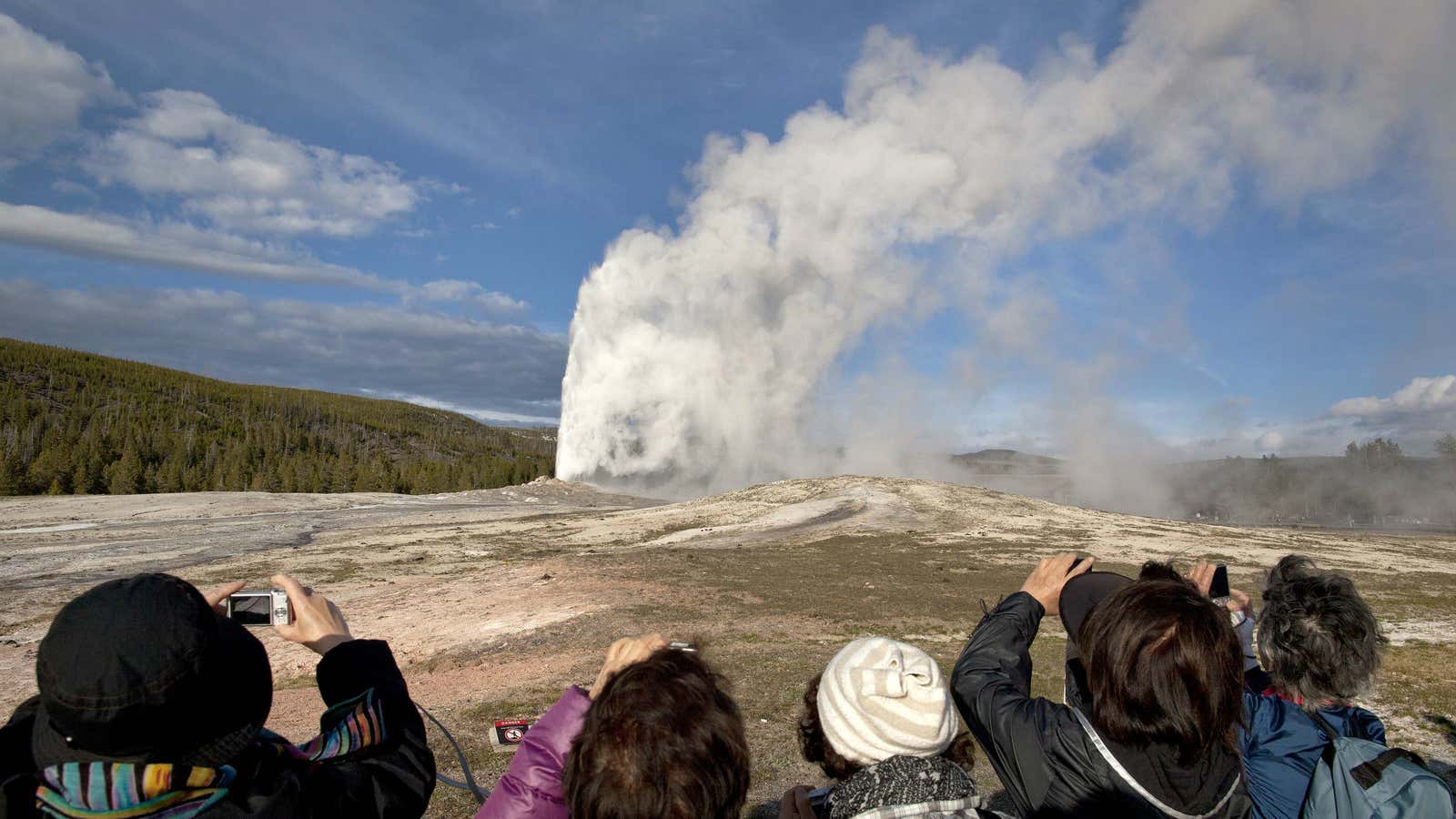During a time when America is coping with back-to-back-to-back hurricanes, destructive wildfires raging across northern California, and an unpredictable White House, the social climate is perfect for supervolcano hysteria. This helps explain why there has been so much discussion about the volcano brewing under Yellowstone National Park and its “planet-killing potential.”
Stories began to crop up after an August meeting of the International Association of Volcanology and Chemistry in Portland, Oregon. Researchers from Arizona State University presented new evidence showing that geological changes we thought might happen over centuries could actually occur over the next few decades. That means it’s possible people alive today will witness geological events that have long been expected to occur after we’re all dead.
The buried volcano in Yellowstone last erupted about 631,000 years ago—one of three known instances. While we have no way of pinpointing exactly when the next will take place, evidence suggests another could happen between 15 years and several thousand years in the future—a pretty wide swath of time.
Researchers think an eruption could happen sooner (paywall) than previously expected after a team analyzed trace crystals in fossilized rocks and ash from Yellowstone’s last big eruption. The results of their work have scientists wondering whether the supervolcano become more active following two influxes of magma.
Michael Poland, a scientist at the Yellowstone Volcano Observatory for the US Geological Survey, told National Geographic that the new evidence is “somewhat preliminary, but quite tantalizing.” In other words: It’s way too early to descend into hysteria, but people should be mindful and aware of the evidence.
So, no, NASA isn’t planning to drill a hole into the volcano to try and “defuse” it. And no, Fox News, a UFO is not buzzing around the volcano site. Best to keep calm and let volcanologists do their jobs.
For edit: Global warming won’t just change the weather—it could trigger massive earthquakes and volcanoes
